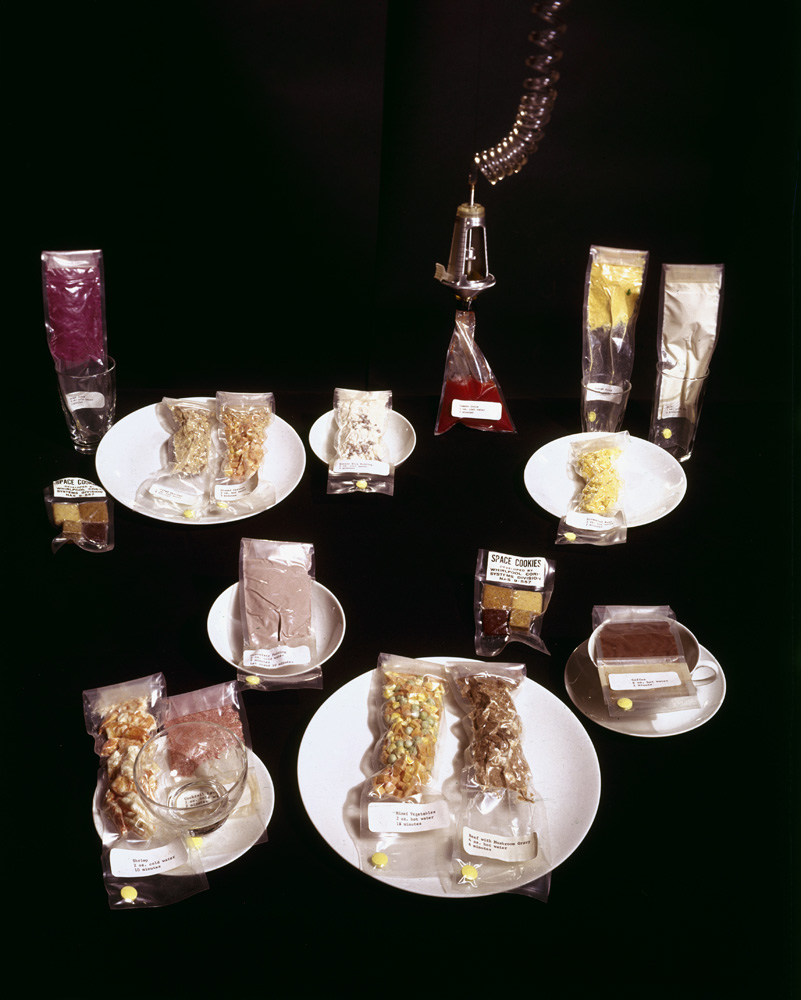
Meals served at the International Space Station these days reflect the diversity of the people and machinery on the project. Since 2008, for example—the year Space Shuttle missions, and Japanese astronauts, began delivering Japanese components for the module Kibo to the ISS—cuisine has included ramen, salmon and curry.
John Glenn, the first astronaut to eat in space—during his famous Friendship 7 flight in 1962—endured freeze-dried powders and semi-liquids. Gemini astronauts of the mid-1960s, meanwhile, enjoyed somewhat improved fare—shrimp cocktail, butterscotch pudding, applesauce—that would have made their Project Mercury brethrens’ mouths water. Apollo astronauts were the first to have hot water while in orbit, which greatly helped rehydrate freeze-dried meals.
Food eaten in space is still, to this day, canned, dehydrated or otherwise “packaged”—meaning no fresh fruit or veggies while orbiting. But fans of astronaut lore recall the tale of a corned beef sandwich purchased in a California deli, a favorite of astronaut Gus Grissom, that was snuck aboard the Gemini III craft. NASA suits were not amused, and the regulations governing what astronauts could and could not bring with them into space were tightened.
It’s unclear what astronauts of the future will dine on, but it’s increasingly likely that, before too long, space travelers will grow and eat their own edible produce. It might not be home cooking—but it beats freeze-dried mush from a tube.
New York native Adam Glanzman is a Photo Intern at TIME.com. See his personal photography at adamglanzmanphotography.com and follow him @glanzpiece.

More Must-Reads from TIME
- Donald Trump Is TIME's 2024 Person of the Year
- Why We Chose Trump as Person of the Year
- Is Intermittent Fasting Good or Bad for You?
- The 100 Must-Read Books of 2024
- The 20 Best Christmas TV Episodes
- Column: If Optimism Feels Ridiculous Now, Try Hope
- The Future of Climate Action Is Trade Policy
- Merle Bombardieri Is Helping People Make the Baby Decision
Contact us at letters@time.com